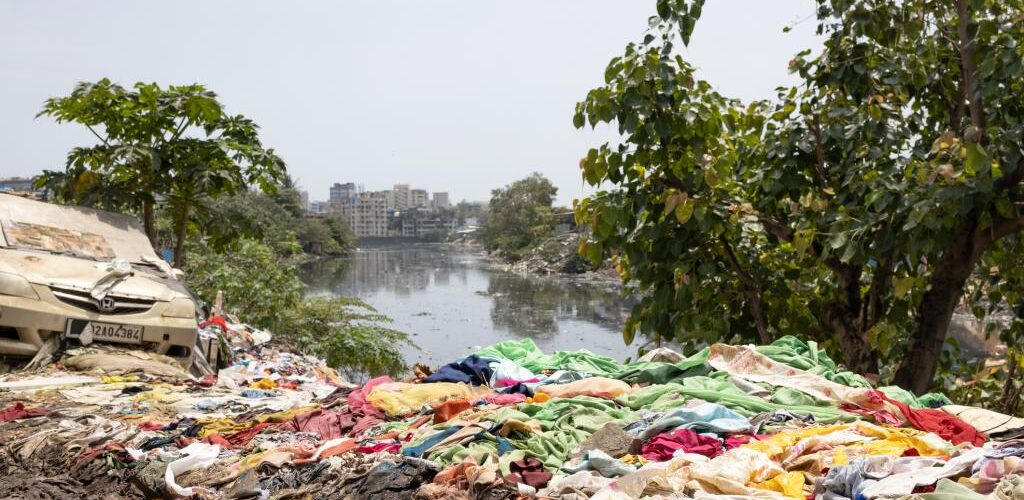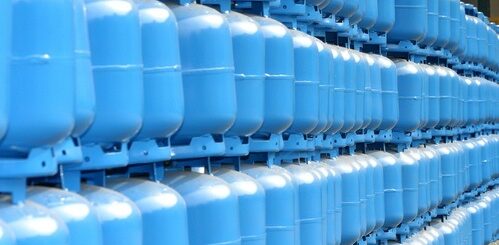Textile waste takes center stage in Parliament: Why the discussion is vital

The allocation for the textiles ministry was increased by 27.6 percent in the 2024 interim budget, however there were no specific guidelines to address the issue of waste
The vibrant fabric in India’s Indian sector of the textile, which is a essential element of India’s economic and social identity is now facing an ever-growing threatthe burgeoning waste from textiles crisis. Concerns about the waste of textiles are recently gaining prominence during Parliament’s Rajya Sabha, sparking urgent discussions on its impacts on the environment, its economic impact and solutions.
In discussions in the Upper House of the Parliament the complete, centralised and state-wise information on the generation of textile waste is still elusive. The gravity of the issue is evident.
The response of the government during the December and July 2023 sessions also provided a picture of disjointed action and unclear accountability. While they emphasized existing regulations, such as that of Plastic Waste Management Rules, 2016 and the Extended producer Responsibility guidelines, targeted mainly at packaging made of plastic They also emphasized local authorities’ responsibility to “other plastic sources” like synthetic textiles.
Initiatives such as those of the “Textile Advisory Group on Man-made Fiber (MMF)” could increase industry participation, but their efficacy isn’t clear. Lack of a coordinated strategy leaves the impact of synthetic materials and their waste unaddressed.
The textile waste of India is made up of natural fibres such as cotton wool, jute and other things. Although natural fibres are biodegradable but their rate of decomposition can be slow, and poor management can result in environmental issues.
The man-made fibers (MMF) are also often referred to as synthetic fibres also constitute a large portion of the trash. Problems with separation, sorting, and technological limits often result in recycling or unintentional dumping. Many fabrics are made up of synthetic and natural fibres, which can make the composition picture even more complex. Separating these fibres into recycling segments is also a challenge.
India is the second-largest manufacturer of MMFs. Many of the most well-known MMFs such as polyester, acrylic, nylon and spandex are made of fossil fuels. The building blocks of several MMFs are chemically similar to plastic.
A lot of MMFs use chemical treatments and finishes to achieve desired properties, which could involve additional chemicals derived from plastic. In the course of production, washing as well as wear and tear, MMFs are able to shed small plastic fibres that are referred to as microplastics. Certain MMFs like polyester are also made from plastic bottles that are recycled chemically.
Furthermore, MMF waste poses disposal issues. In contrast to natural fibres, they aren’t able to biodegrade easily and can cause landfill accumulation and the possibility of microplastic release.
The long-standing tradition of reusing and re-use is still in place in the small towns of the country, ensuring that textiles remain in circulation for longer. But this system is not sufficient to deal with the ever-growing amount of waste produced from the industry’s rapid expansion.
The country imports about 20 percent of its synthetic fibers, and produces the rest of the 80 per cent of the product domestically. The country produces around 1,441 million tonnes of synthetic fibres as well as over 3 million tonnes of filaments made from synthetic materials.
More than 94 percent of India’s national MMF industry is controlled by only two types that are viscose and polyester (rayon). Polyester has the largest share with 77.5 percent, and leaves the remaining 16.5 percent to viscose.
The environmental impact of the ecosystem is astonishing. The production of polyester alone consumes approximately three42 million barrels and 43 million tonnes chemicals each year. With a production capability in excess of 11.5 million tonnes annually and the potential for increase, polyester is considered as the largest producer of both preand post-consumer textile trash.
According to a report from 2022 on Circular Economy in Municipal Solid and Liquid Waste by the Union Ministry of Housing and Urban Affairs In the total of 47,860.15 tonnes of daily dry waste derived by municipalities in the year 2021 textiles comprised a staggering 15%, making it the third highest dry waste stream following plastics (45 percent) and paper/cardboard (21 percent). But only 30 percent of the waste was recovered and this highlights the enormous gap in the management of waste. In the Indian Textile Journal reported that more than 1 million tonnes of clothing, mostly polyester, are dumped each year most of them from homes.
Talks with an aggregator showed that, of the domestic textile waste that is recycled by post-consumers the cost of sorting is around Rs 45-50 per kilo. This is exacerbated by the high logistics costs for city-wide collection and transport.
The burden is made worse by the low value of textiles in the second-hand market – between 8 and 12 per kilogram. About 10 percent is repurposed by upcycling, a further 10% go to thrift stores, and 20 percent is recycled.
The domestic textile waste of India mainly includes polyester, cotton, and blends of them. Making blended and printed feedstock into quality products is a difficult task due to the limitations of technology and a lack of creativity. Lack of an extensive classifier for waste textiles makes the problem more difficult. Biodegradable, non-biodegradable and recyclable, and non-recyclable materials are in a muddle, which hinders efficient recycling and sorting efforts.
Around 20-30 percent of textile waste is burned in energy plants because of contamination, as well as because of the insufficient technology to process damaged and used textiles.
Human cost is equally worrying, with workers in the industry of textile waste having to endure low wages, shoddy working conditions, and a lack of opportunities. The stakeholders in the post-consumer waste value chain demand government assistance to solve these problems including financial assistance to workers, to better technology and infrastructure for purchasing and sorting.
The interim budget for 2024 offered mixed results for the industry of textiles. Although it was true that the Union Ministry of Textiles received an increase of 27.6 percent increase in its allocation but there were no specific guidelines for tackling the issue of waste. A greater emphasis on bio-manufacturing, rooftop solar and offshore wind energy could help promote green practices and reduce the environment footprint of the industry however, concrete steps to manage waste are required.
The problem of textile waste requires an approach that is multi-faceted. We require improved data collection, an efficient recycling and sorting infrastructures as well as incentives for sustainable production as well as consumer education. In addition, encouraging extended producer responsibility, promoting the design of disassembly, and promoting the development of innovative recycling and upcycling technologies are essential.




